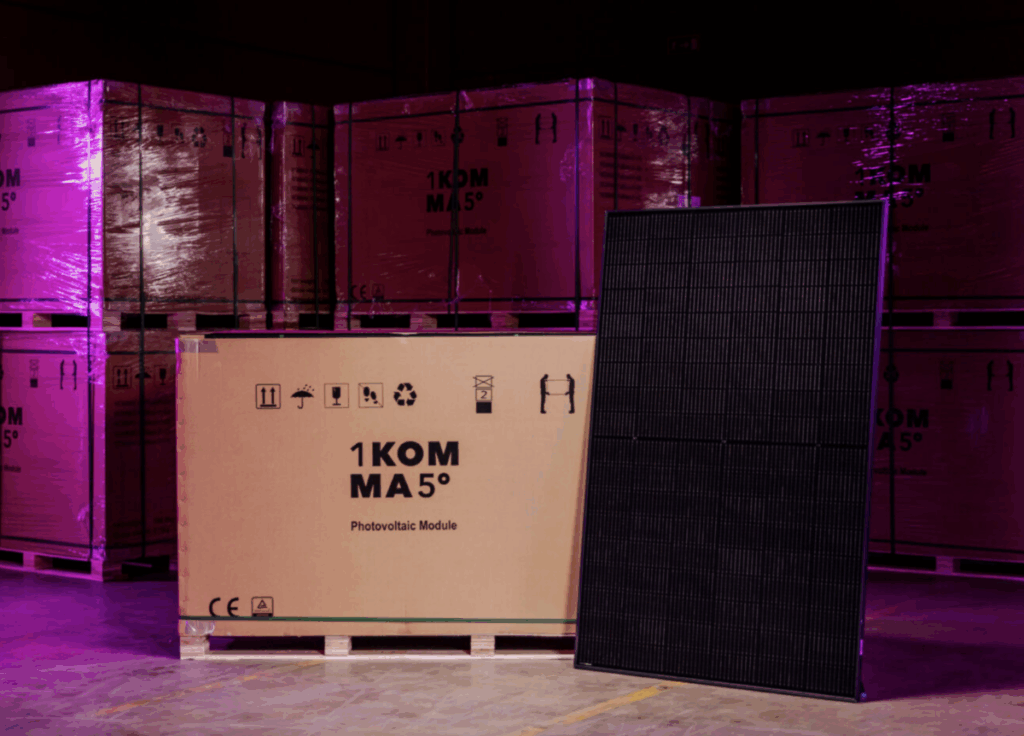German home energy and electrification company 1coma5 ° has unveiled a residential energy ecosystem for the Australian market, including solar panels, hybrid inverter and the intelligent solution of the Battery Energy Storage brand.
Launched in the run -up to the $ 2.3 billion battery discount scheme of the Australian government that goes live on July 1, includes the Virtual Power Plant (VPP) Ready Ecosystem 1Komma5 ° ‘s newest generation full black double glass solar module, Hybrid inverter “Feeding Battery”
1Momma5 ° Australia, Chief Executive Officer Luke Stronach, said that each of the products has been developed to better manage intensive VPP and the daily microcycli needed to participate in the Wholesale Energy Market and create a profit option for households.
“We have applied duct tape for 20 years on energy infrastructure that has not caught up with modern, renewable and technical energy energy systems,” he said.
“We now have the policy institutions to help Australian households get the best in the abundant renewable energy that we have in the country and when removing the biggest barrier for energy independence. Our products are here to convert volatile prices of a problem into a solution.”
Included in the newly launched package of products is the 1Momma5 ° Full Black Double-Glass solar panel. Developed with Topcon technology, deliver the panels up to 450 W power with an efficiency of 22.8%. They are supported by a 30-year product and performance guarantee.
The hybrid inverter has input/output capacity of 5-15 kW and a maximum of four MPPTs. It is available in both single-phase and three-phase options and is housed in an IP65-rated unit and is supported by a 12-year warranty.
The 1 -comma5 ° battery designed by German has a modular, step -by -step design that can be scaled 37.8 kWh. With prismatic LFP cells, it delivers up to 20.16 kW of load/discharge capacity and is supplied with built-in power failure protection. 1Comma5 ° said that the battery offers 7,000 cycles under a 12 -year warranty compared to the standard 4,000 cycles.
“In contrast to standard batteries that simply store solar energy for evening use, the 1 -comma5 ° system is designed to perform multiple microcycli daily,” the company said. “In combination with an intelligent VPP, the battery can buy all the required energy when wholesale prices are low and are sold surplus to the just when the prices are high if needed.”
1Comma5 ° said that the system was designed to integrate with the company’s intelligent energy bit software. The energy management platform, which is already being rolled out in Europe and will soon be planned for release in Australia, coordinates the use of household energy and also links houses to the wholesale market.
“Australian households now have a one-stop shop for their needs of renewable energy,” said Stronach.
“We design it, we install it, we support it. It is German engineering in combination with Australian support at a time when we are confronted with the biggest shift in household energy since the original solar tree.”
The launch of the ecosystem comes when the Australian energy sector is preparing for the introduction of the Australian government Cheaper home batteries program. The initiative of $ 2.3 billion (USD 1.49 billion), which rolls out on July 1, 2025, will offer households and discounts in small companies up to $ 372 per kWh of usable battery capacity.
Battery systems with a nominal capacity of 5 kWh to 100 kWh are eligible, but STCs can only be claimed for the first 50 kWh of usable capacity. The discount is available for both new and existing home solar systems that integrate battery storage and systems that are supported under the program installed on or off-grid. An important element of the schedule is that the battery in an on-grid system must be able to be coordinated via a VPP.
The program, which must be supplied via the existing small -scale renewable energy schedule (SRES), is expected to installation of more than a million new batteries by 2030.
This content is protected by copyright and may not be reused. If you want to work with us and reuse part of our content, please contact: editors@pv-magazine.com.
Popular content


